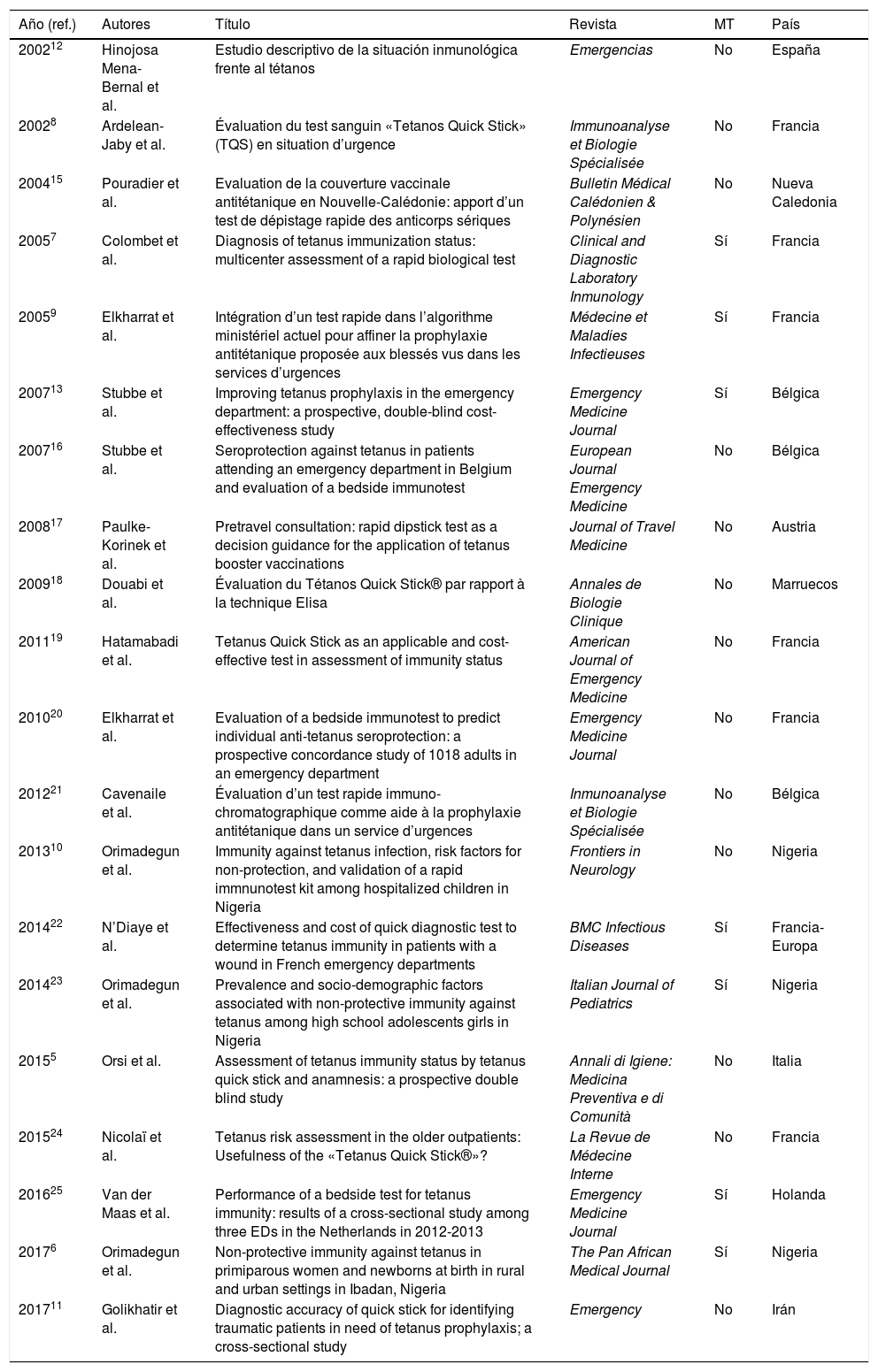La atención a las heridas de riesgo tetanígeno en los servicios de urgencias suele incluir la administración de gammaglobulina y/o vacuna antitetánica.
La prueba de detección rápida de anticuerpos frente a tétanos (Tetanus Quick Stick [TQS]) podría mejorar la práctica clínica habitual al identificar a las personas no inmunizadas. Nuestro objetivo es analizar la validez de la prueba diagnóstica TQS y su coste-beneficio según la literatura disponible.
Realizamos una búsqueda en las bases de datos WoS, PubMed, EMBASE y SCOPUS. Tras aplicar criterios de inclusión y exclusión, se recuperaron 20 artículos, la mayoría de ellos europeos y redactados por servicios de urgencias. El rango de los test de sensibilidad oscila entre el 55-100%, el de especificidad entre el 66,6-100%, el VPP: 81,1-100% y el VPN: 42,9-100%. La mayoría de estudios avalan el coste-beneficio de la aplicación del TQS. Creemos que el uso del TQS en urgencias sería recomendable y un ejemplo de buena práctica clínica.
Standard procedure when treating tetanigenic risk wounds in an emergency room setting, usually includes administering a dose of gamma-globulin or/and a tetanus vaccine.
The rapid detection test (Tetanus Quick Stick [TQS]) can better the current procedure of detecting people who are not immunized. Our objective was to review and analyse the validity of the TQS test, and determine the cost-benefit with the data available.
We searched the following data bases for information: WoS, PubMed, EMBASE & SCOPUS. After reviewing articles and applying inclusion/exclusion criteria, we included 20 articles mostly European and written by Emergency room services. Sensitivity ranged from 55%-100%, specificity from 66.6%-100%, PPV: 81.1%-100%, NPV: 42.9%-100%. Most of the tests supported the cost-benefit analysis of the TQS test. We determined that in emergency room situations, it would be beneficial to use the TQS test, and an example of good clinical practice.









